The Wide-Eyed Sunbittern
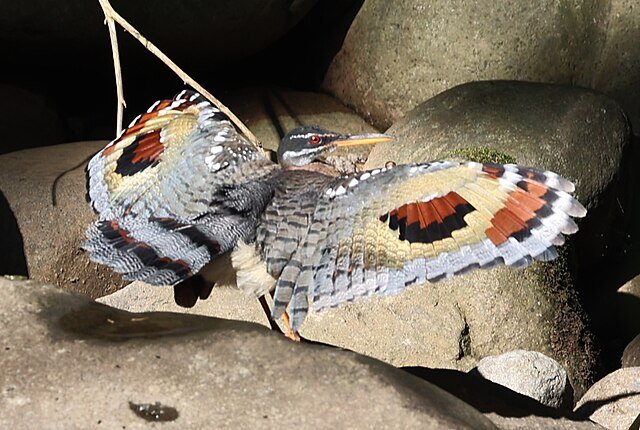
This is not one of Costa Rica’s most colorful or famous birds (not even close) BUT… the Sunbittern wears a striking example of an ocellus, or eyespots. These markings are used during courtship & threat displays or to scare & confuse attacking predators. While otherwise unremarkably colored, their plumage can become an head-turner at times when their wings are extended in flight or displays. An amazing example of adaptation and evolution.
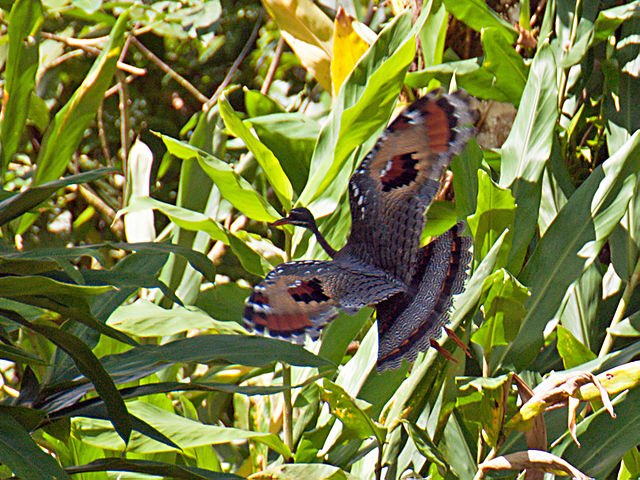
The bird’s name is derived from the eyespots’ resemblance to the sun & her shining bright rays.
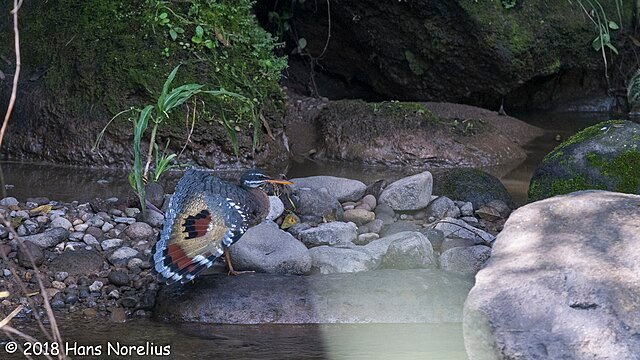
ALL ABOUT THE OCELLUS
We wrote about the Blue Morpho’s bold use of the ocellus in a previous bog. An ocellus or ‘eye spots’ are peculiar markings used by many animals including insects, fish, birds, reptiles and mammals – in effect, a pair of false eyes. In our case, the false eyes discourage predators from harming the Sunbittern – via scaring the attacking animals by making the bird appear to be a much larger creature, and by deflecting the attack towards the less vulnerable body areas. The eyespots are also used to attract a mate and and in intra-specie competitions. They are ‘accidentally’ displayed when the bird is enjoying the habit of spreading its wings in the sun to regulate its body temperature.
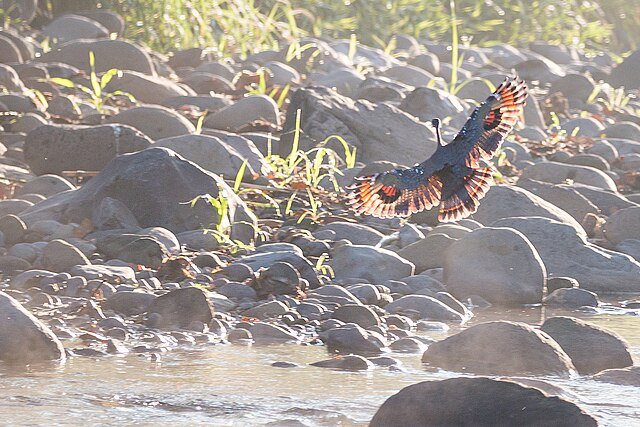
Amongst birds, species of peacocks and pheasants are perhaps the only examples with a similarly impressive ocellus – but none of them wear such sizeable and intimidating ‘eyes’ as the Sunbittern.
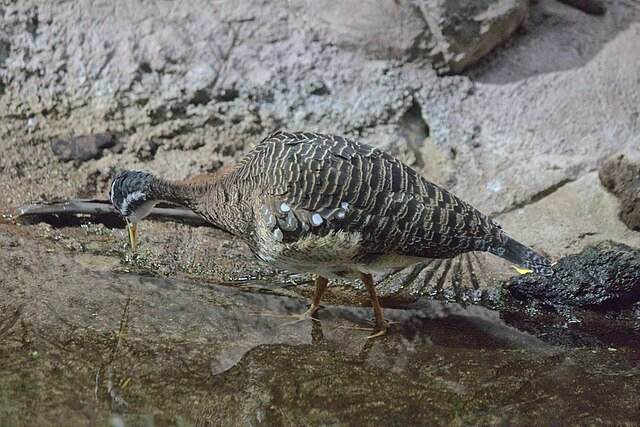
TOOL USE
Sunbitterns are one of very few animal species which have demonstrated the use of tools. The birds have been observed to use ‘lures’ while hunting – in the noted example, a bird placed maggots on the surface of the water in order to attract fish, which were then captured by the Sunbittern.
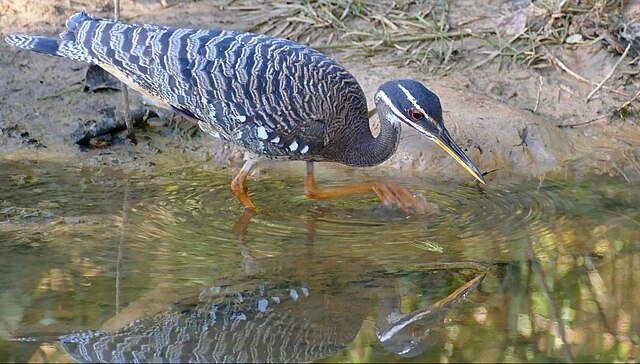
This places the Sunbittern in a very exclusive club amongst select species of apes, monkeys, dolphins, elephants and crows. It is a great evolutionary step where food is not rapidly consumed but rather strategically used to attract a bigger meal – with a very good possibility of the lure being lost.
ANCIENT BIRD WITH FEW LIVING RELATIVES
Despite the name, Sunbitterns are not closely related to bitterns or herons. In fact their nearest relative is the Kagu, a bird from the remote islands of New Caledonia nearly 11,000km or 7,000 miles away. So, unbelievably, their nearest cousin is all the way across the Pacific Ocean – and no close relatives remain.
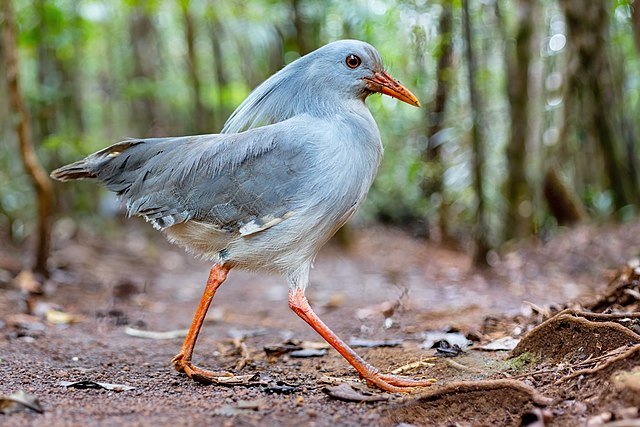
This suggests a Gondwanan origin of the bird – the predecessor of both the Sunbittern and the Kagu lived on the Gondwanan supercontinent before it started to split some 180 million years ago. So it is thought that the Sunbittern is an ancient bird, a living fossil whose evolutionary relatives date back 40 million years and its bird-like predecessors date back all the way to the days of Gondwana when birds, as a Class, were just beginning to emerge. That is also when dinosaurs sroamed and would continue to roam for another 80 million years.

The Sunbittern belongs to an Order with just three species (the two others being Kagus) and is the only specie in its Family, Genus & Species classifications. And while three sub-species are recognized, these are geographically separated from each other so the family tree of the Sunbittern is lonely indeed.
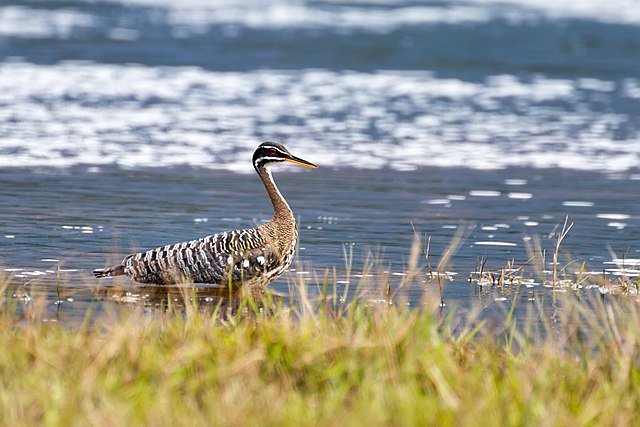
VOCALIZATIONS
Like its cousin the Kagu, Sunbitterns are known for their striking vocalizations which have been described as doglike barks & growls. At other times, the birds vocalize through soft, melodic whistles, sometimes performed in pairs as a beautiful duet. To hear both types of vocalizations, click here.
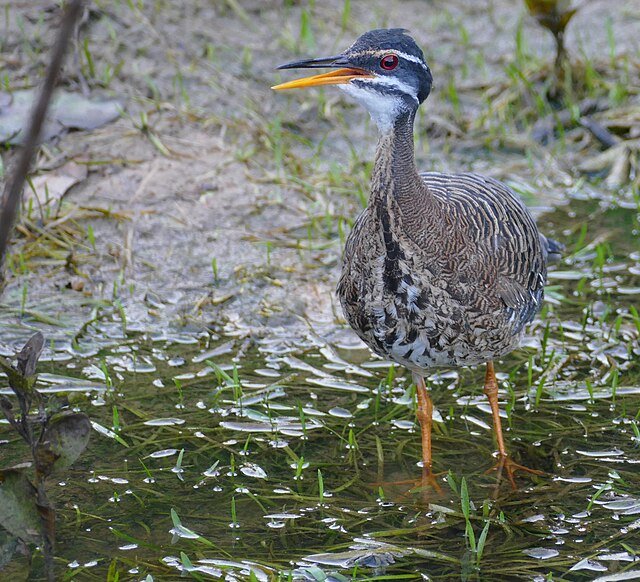
BEHAVIOUR
The Sunbitters are rather solitary, spending their time alone in hunting or foraging engagements within their territory. They are not picky eaters, happy to take insects including cockroaches, larvae, flies & moths, as well as crabs, shrimps, worms, fish, tadpoles, frogs, eels and lizards.
Preferring tucked-away and densely vegetated shorelines, swamplands, lakes, lagoons and riverbanks, they are not frequently seen – their camouflage, shy nature and slow movements are the opposite of eye-catching.
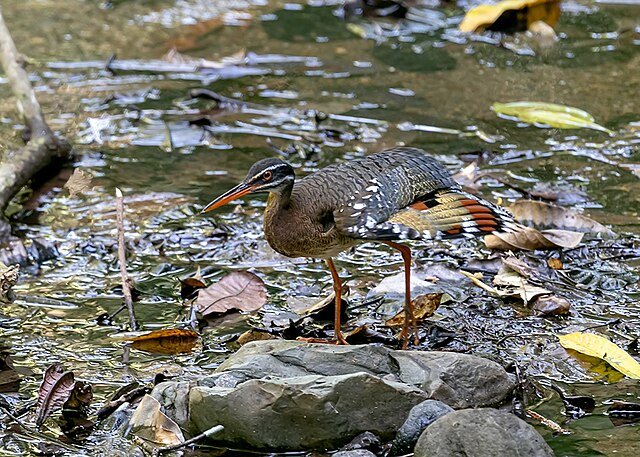
However this secluded lifestyle changes during the breeding season as Sunbitterns engage in very co-operative parenting practices. Males enact intricate dances to impress the female of their choice – spreading their wings and bobbing their heads, they put on a true show up to 15m or 50 feet above the ground. Both the male and the female take part in building the nest and both take turns incubating the perfectly camouflaged eggs and hunting for food. The mate-bond is often a lifelong affair for these birds, who display strong monogamy.
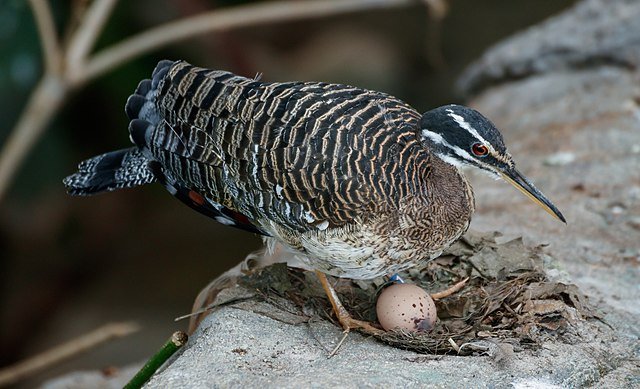
The young are born ready to roll – upon hatching the ‘precocial’ chicks have opened eyes, are already highly mobile, sport a dress of downy feathers, and are able to flee away from threats – however they do stay in the nest for a few weeks, their sleek camouflage helping them blend into their environment.
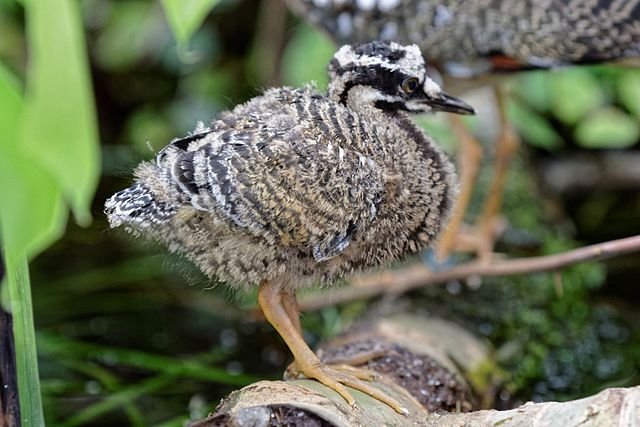
KEEP A SHARP EYE!
These birds prefer a behind-the-scenes approach. The key to spotting a Sunbittern lie in being familiar with their habits, habitat, vocalizations, and behaviors. Their slow and deliberate movements, together with an effective camouflage, help them blend into the scenery while their calls are easily muffled by surrounding vegetation and burbling rivers. The lucky few, however, will witness a bright ocellus performance – catching the bird on the wing or with its wings extended, the striking patterns will be a sight to behold and a memory to treasure.
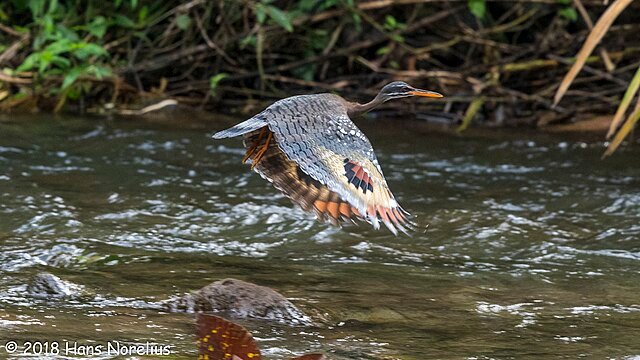
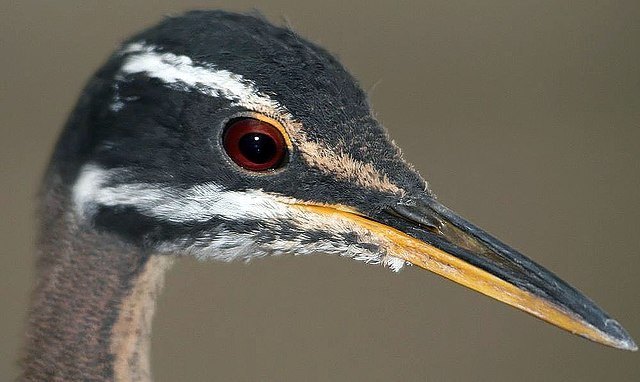
Do you dream of living in the midst of breathtaking tropical scenery and amongst amazing animals like the striking Sunbittern? At RE/MAX WE SELL PARADISE, we list hundreds of tropical properties – homes, land, farms, estates & businesses – all within a stone’s throw of the amazing rainforests, mountains and beaches that make Costa Ballena a world-famous destination. See our property listings here.
Cover photo cpurtesy of Tony Hisgett



